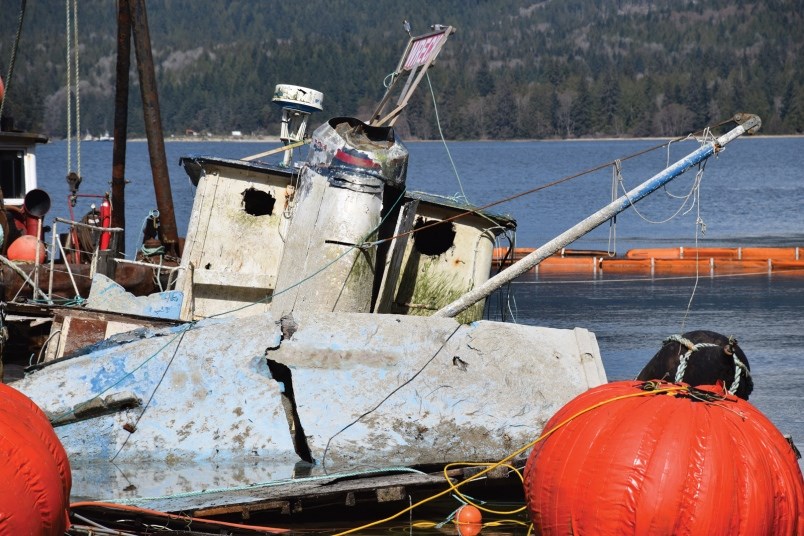Sunshine Coast Regional District (SCRD) directors are considering a pitch from a not-profit society billing itself as a one-stop-shop for dealing with derelict and abandoned boats.
“As an organization, we do it all, we do the assessments, we do the seizures, we do the removal and disposal of the whole program. We handle that end of it ourselves,” said John Roe of the Dead Boat Disposal Society during his presentation to directors at a July 11 planning committee meeting.
Roe asked directors to consider entering into an arrangement that would allow the society to assess, remove and dispose of abandoned boats and boat debris in the coastal waters of the Sunshine Coast.
The society would use funds from Transport Canada’s abandoned boats program, which provides grants to assist with the removal of hazardous abandoned or wrecked boats.
The society already has a similar arrangement with Transport Canada and the Capital Regional District (CRD) on Vancouver Island, and the society is working with the District of Sechelt, which received $70,000 in grant money from the program to assess five vessels in Porpoise Bay. They have also begun working with qathet Regional District. In total, the society has removed 44 boats, through the program, with the help of private and public funders.
“If we started today on inventorying the boats on the Sunshine Coast we can actually find out how much it costs and that determines our ask from the Sunshine Coast, regional government if they want to participate, but we need to find out what’s out there right now,” said Roe.
“We’re finally making progress here,” he said, adding that they appear to be the only organization in Canada to take this approach. “The Department of Transportation has assured us that if there’s any money left we can spend it, so I want to spend it on our coasts as fast as possible.”
When asked by Gibsons director Bill Beamish, “what kind of money we’re looking at,” Roe said he didn’t have any estimates yet, but that about $1.5 million had been spent in the Gulf Islands area, with CRD contributing about $400,000, and that in his discussion with Transport Canada, “they will consider a lesser amount,” for the SCRD since it has a smaller tax base.
Elphinstone director Donna McMahon asked whether the SCRD has a means of funding the initiative, and planning general manager Ian Hall confirmed there was no funding service for that specific purpose before suggesting grants-in-aid “might be a fit.”
Sechelt director Darnelda Siegers supported the idea of moving ahead. “I know the regional district has an issue. Up and down Pender, for example, there’s a lot [and] down in Howe Sound, so I think it is something we need to look at with staff to see how we actually move it forward because part of it means we would need to apply for grant funding from the federal government to assist with our portion, which then we can leverage using your resources,” said Siegers.
Roberts Creek director Andreas Tize said that “It just doesn’t seem very fair” that people who don’t own boats would be expected to help cover the cost of removal.
Roe said they are trying to work with the provincial and federal government to develop something similar to tire and scrap car programs.
“[What] we’re trying to do, is treat it as a waste management issue and not a derelict boat issue, but going forward, you’re absolutely right, somebody should be held accountable. I’ve been at it for 30 years and not one person has ever been held accountable,” said Roe.
SCRD staff are expected to bring back a report on working with the society in the fall.



